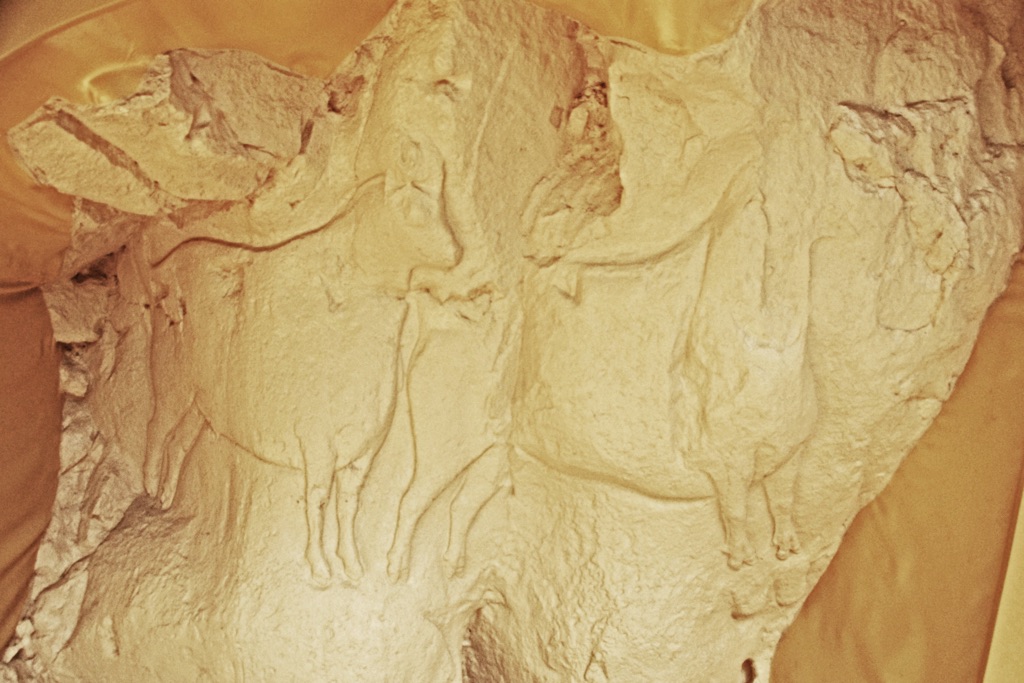The Roc-aux-Sorciers is an Upper Paleolithic rock shelter site famous for its engravings and relief sculptures. Discovered in 1950, it’s often referred to as the “Sistine Chapel of Prehistory.” The artworks date back to around 14,000 years ago, providing insight into the lives and beliefs of our prehistoric ancestors. This site is a significant archaeological find, showcasing some of the earliest known figurative art in Europe.
Get your dose of History via Email
Historical Background of Roc-aux-Sorciers
Lucien Rousseau first discovered Roc-aux-Sorciers in 1927, but it was not until 1950 that its true value was recognized by Suzanne de Saint-Mathurin. Later, Dorothy Garrod, a renowned archaeologist, confirmed its importance. The shelter was carved and inhabited by Magdalenian peoples, hunter-gatherers from the Upper Paleolithic era. While not the scene of major historical events, the site provides a window into the lives of prehistoric humans.
Excavations have revealed that the shelter served as a habitation site. The presence of hearths, stone tools, and food remains tells us that people lived here. Over time, the site has not seen significant later inhabitation. This has allowed the artworks to remain relatively undisturbed, offering a pristine glimpse into the past.
The Magdalenian artisans who created the Roc-aux-Sorciers carvings and engravings were skilled craftsmen. They used the natural contours of the rock to enhance their works, creating a three-dimensional effect. The site’s artwork includes depictions of animals and human figures, which are rare for this period.
While the Roc-aux-Sorciers has not been the scene of historically important events in the modern sense, its discovery has been pivotal in understanding prehistoric art. The site’s preservation allows for ongoing research and study, providing valuable information about the Magdalenian culture and their artistic expression.
The discovery of Roc-aux-Sorciers has had a significant impact on the field of archaeology. It has challenged previous notions about the capabilities and culture of Paleolithic humans. The site continues to be an important focus for research into prehistoric art and human history.
About Roc-aux-Sorciers
Roc-aux-Sorciers is an extended rock shelter located near the Vienne River in France. The shelter’s walls are adorned with engravings and relief sculptures that have survived millennia. The art is primarily made up of representations of animals, including horses, bison, and goats, as well as human figures.
The techniques used to create these works were complex and varied. Artists employed engraving, sculpting, and incising to bring their visions to life. They took advantage of the rock’s natural features to create a sense of depth and realism in their work.
The materials used for the artworks were the limestone rock face itself and the tools were likely made of stone, bone, or antler. The Magdalenian people had a deep understanding of their materials, allowing them to create detailed and durable works.
Architecturally, the shelter does not have constructed elements like buildings or temples. Instead, its natural formation provided protection and a canvas for the Magdalenian people. The site’s location by the river would have been strategic for resources and transportation.
The preservation of Roc-aux-Sorciers is exceptional. The relief sculptures are among the oldest known in the world and are a testament to the artistic skill and cultural sophistication of the Magdalenian people.
Theories and Interpretations
Several theories exist about the purpose of the Roc-aux-Sorciers art. Some suggest it had a religious or ceremonial function, possibly related to hunting magic or ancestor worship. The depictions of animals, particularly those hunted, support this theory.
Others believe the site may have been a place for teaching or storytelling. The detailed representations could have served as visual aids in passing knowledge between generations. This theory highlights the social and educational potential of the site.
There are mysteries surrounding Roc-aux-Sorciers, particularly regarding the meaning of the human figures. Some interpretations suggest they could represent deities or spirits. However, without written records, these interpretations remain speculative.
Historians and archaeologists have matched the site’s art to known Magdalenian artifacts and records. This has helped date the site and understand its cultural context. Carbon dating and stratigraphic analysis have been key in establishing the age of the artworks.
The dating of Roc-aux-Sorciers has been carried out using radiocarbon dating methods. These have confirmed the site’s age to be approximately 14,000 years old, placing it firmly within the Upper Paleolithic period.
At a glance
Country: France
Civilization: Magdalenian culture
Age: Approximately 14,000 years old (around 12,000 BC)
Conclusion and Sources
Reputable sources used in the creation of this article include:

